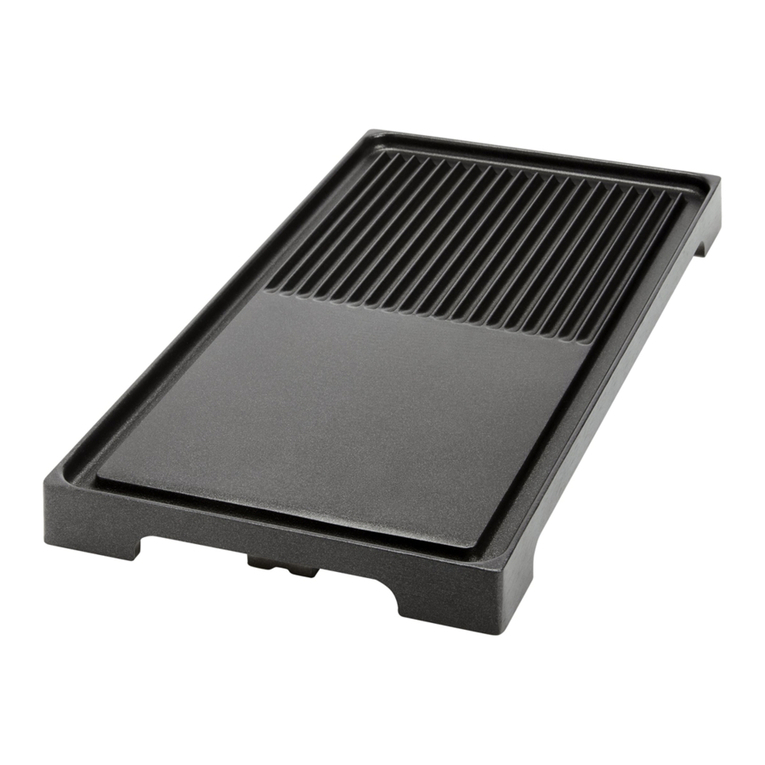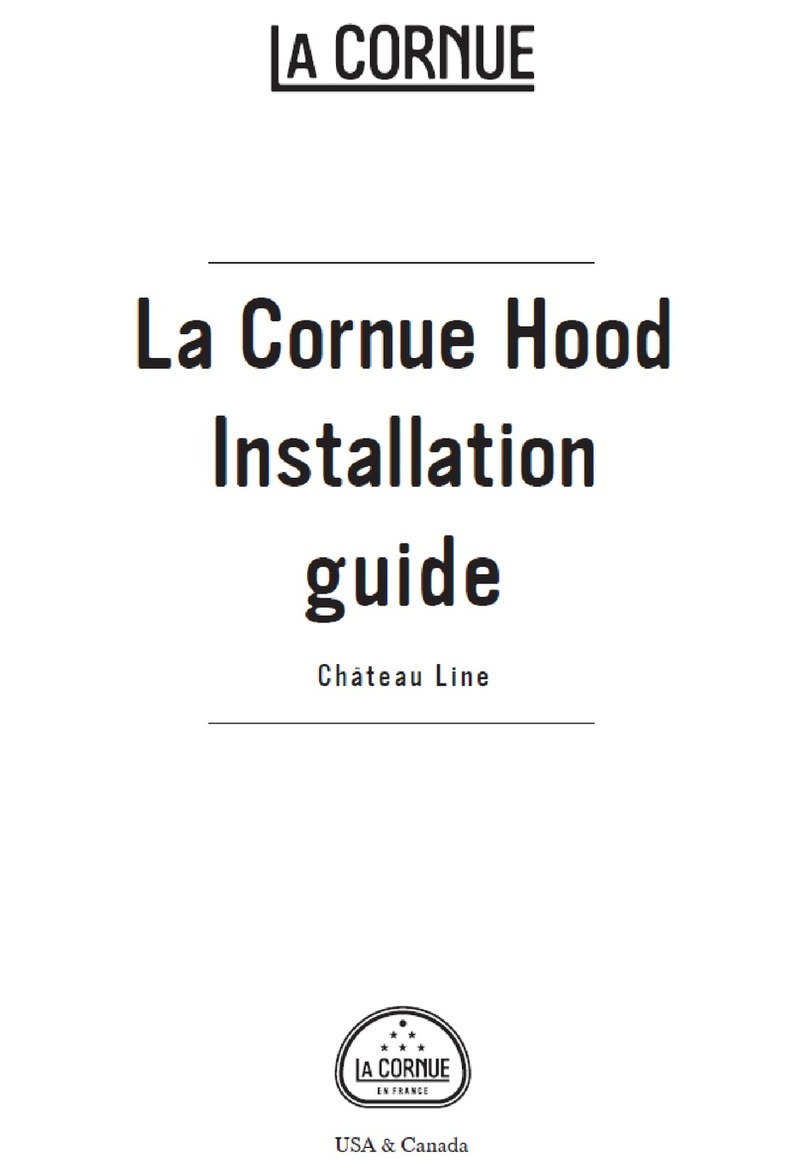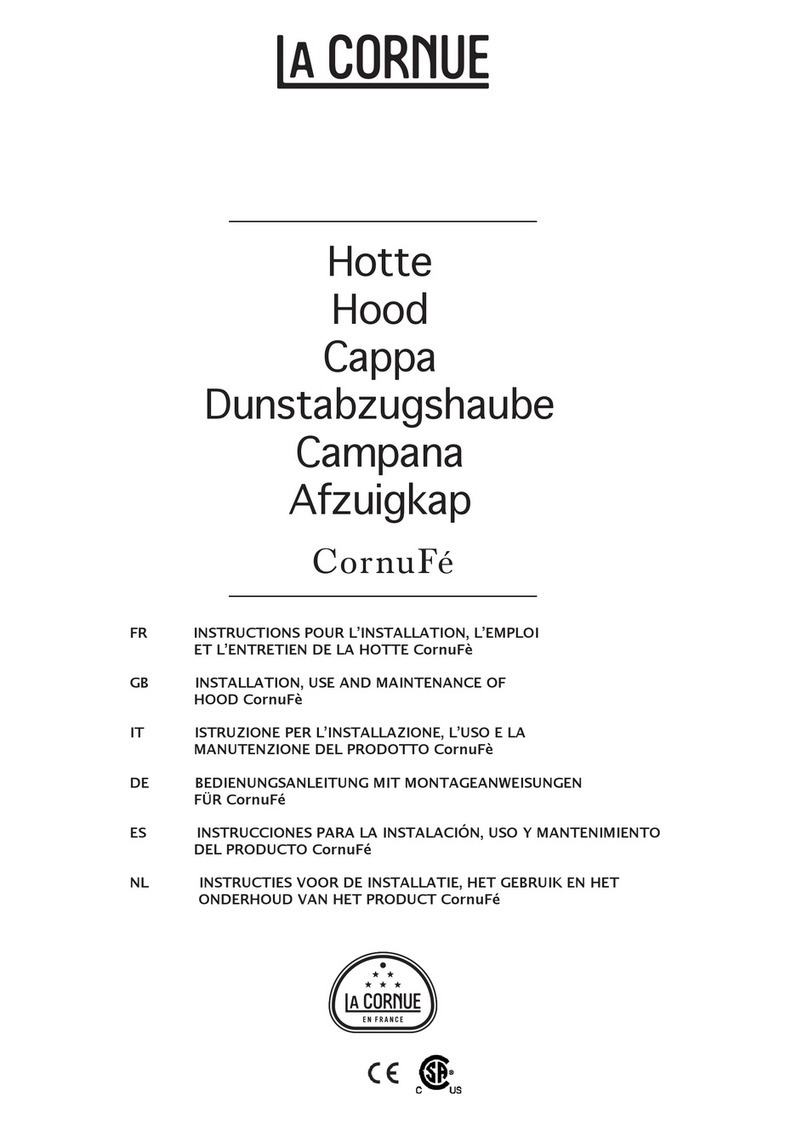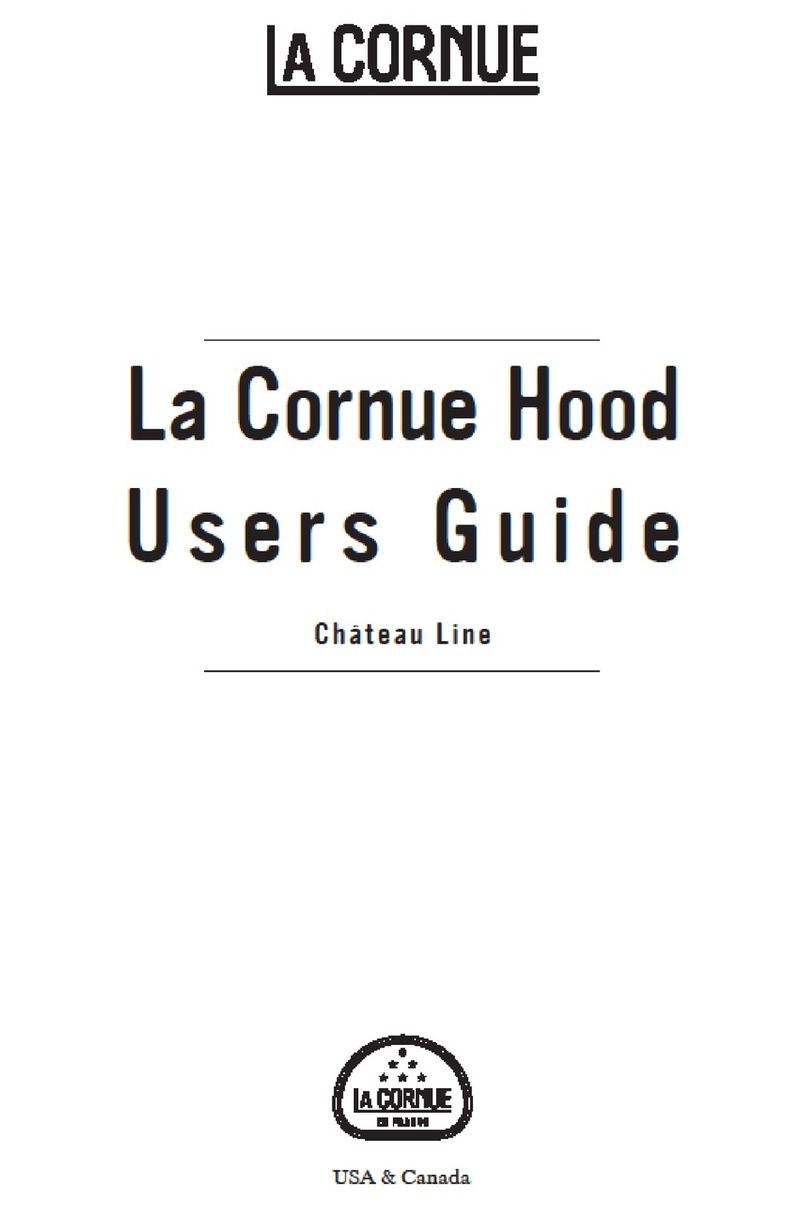
Hottes Chateau
10
3. EXIGENCES DE VENTILATION
Il faut respecter les normes en vigueur concernant le rejet de l’air.
N'utilisez jamais de conduits d'un diamètre inférieur au diamètre de sortie de votre hotte (voir les
spécifications). Si vous vous connectez à un conduit rectangulaire, vous devez vous assurer que la
section de ce conduit est égale ou supérieure à celle du sortie d'évacuation.
Installez les conduits avant d'installer la hotte sur le mur pour éviter que des débris ne pénètrent dans
l'appareil. Nous recommandons que la connexion finale à la sortie d'évacuation de la hotte de cuisinière
se fasse en utilisant des conduits semi-rigides pour faciliter le montage et le démontage et pour fournir
une tolérance pour tout désalignement entre l'extracteur et les conduits fixes.
Remarque: Nous recommandons que les trous de conduit soient plus grands de 25mm que les conduits
pour permettre le passage des câbles (comme les câbles de moteur externe ou d'alimentation) et pour
faciliter l'installation des conduits.
4. SÉCURITÉ INCENDIE
Pour réduire les risques d'incendie, utilisez des composants de conduits métalliques.
Portez une attention particulière aux risques d'incendie lors de la friture.
Ne flambez pas sous l'extracteur.
Pour minimiser les risques d'incendie, toutes les instructions relatives au nettoyage des filtres à graisse
et à l'élimination des dépôts de graisse doivent être respectées.
5. PERFORMANCE DE LA HOTTE
L'influence la plus importante sur la performance de l'extracteur est la conception de la conduite qui
prend l'air d'échappement de l'extracteur à l'extérieur.
N'utilisez jamais de conduits d'un diamètre inférieur au diamètre de sortie de votre hotte (voir les
spécifications). Si vous vous connectez à un conduit rectangulaire, vous devez vous assurer que la
section de ce conduit est égale ou supérieure à celle du sortie d'évacuation.
La longueur de la route du conduit doit être aussi courte que possible avec le moins de coudes possible.
Une route comportant plus de deux virages à 90 degrés peut dégrader considérablement les
performances du système d'extraction.
ATTENTION
Il convient de veiller à ce que les pressions négatives provoquées par les systèmes d'extraction haute
performance ne nuisent pas à la sécurité de fonctionnement de certains types d'appareils à
combustion (gaz, pétrole ou combustibles solides), y compris ceux installés dans la cuisine et
éventuellement ceux installés dans d'autres parties de la maison.
Lorsque de tels appareils sont installés, une ventilation adéquate DOIT être prévue dans la pièce
d'installation, située et dimensionnée de telle sorte que la pression négative dans la pièce créée par
l'extracteur n'excède pas 4Pa.
En cas de doute, n'utilisez pas simultanément l'extracteur et le (s) appareil (s) combustible (s) et
consultez un expert compétent (pour le type de carburant).
ATTENTION
L'air évacué ne doit pas être évacué dans une cheminée qui est utilisée pour évacuer les fumées
des appareils alimentés en énergie autre que l'électricité, par ex. les chaudières de chauffage central
au mazout ou au gaz, les chauffe-eau au gaz, etc.

































